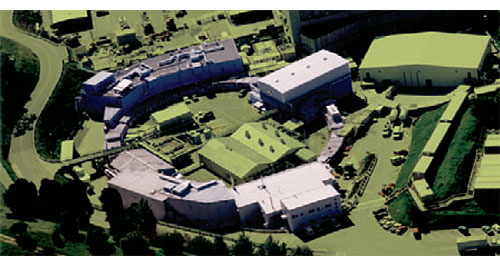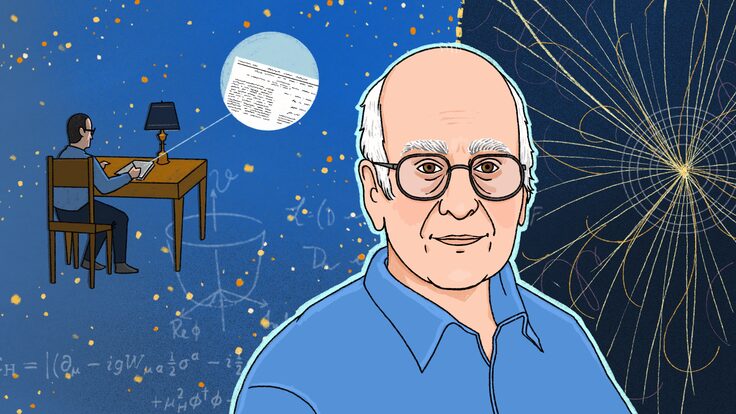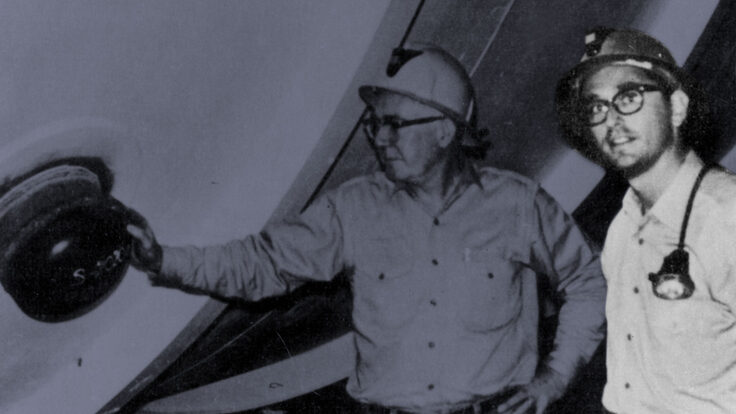Breathing accelerator
 Photo: SLAC |
As the sun rises each day, warming the grounds and buildings of the Stanford Linear Accelerator Center, the entire SPEAR3 synchrotron facility expands in response. The change is minuscule, on the scale of a few microns--far too slight to observe with the naked eye. But this expansion doesn't escape the watchful gaze of the SPEAR3 feedback regulation system. In fact, the system responds by "breathing" in time with daily fluctuations in temperature.
As the infield area and the shielding tunnel of SPEAR3 heat up and expand radially, the lattice of magnets that keeps the beam focused expands with it. Hence the beam becomes slightly displaced in relation to the magnets.
In order to keep the beam centered, the beam must be expanded in circumference. To achieve this, an array of beam position monitors (BPMs) precisely measures the displacement of the beam and relays the information to a feedback system.
"The BPMs signal that the beam is not where it's supposed to be," explains Jeff Corbett. "The beam circumference is set by radiofrequency, so the feedback system adjusts the radiofrequency to keep the beam centered in the BPMs."
The feedback signal from the BPMs cycles every six seconds. While the sun is rising and SPEAR3 is expanding, the radiofrequency drops by about half a hertz. Then, as temperatures begin to cool off in the early afternoon, the radio frequency rises again as the building contracts.
Recent plots of the daily frequency shift confirm the pattern. Corbett expects to see a similar effect in response to the change in seasons over an annual time scale.
"The effect is roughly proportional to the circumference of the machine," Corbett says. With a bigger machine, a bigger shift in frequency is generally observed. According to Corbett, the LEP ring at CERN, Geneva, and the Advanced Photon Source, Illinois, have even been observed to breathe in circumference due to gravitational effects of the moon.
Matthew Early Wright
Click here to download the pdf version of this article.






